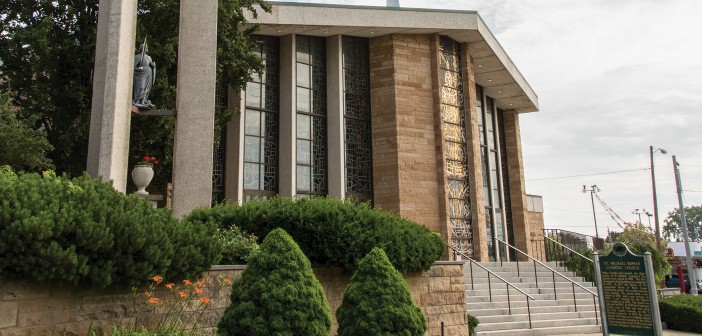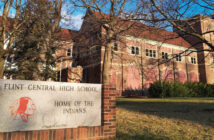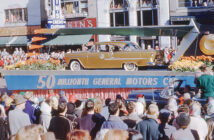In the 19th century, many Irish settlers came to Flint. Many churches were established by the Irish, including St. Michael’s, which was started by Catholic immigrants from Ireland. According to the church’s history on their website, St. Michael’s originated in 1844, and it was Genesee County’s “Mother Church.” For 25 years, it was the only Catholic church serving the area.
In the early 1880s, many Irish came to the area after helping build the Erie Canal in New York. According to a Flint Journal article: “In Michigan, they were miners, farmers, merchants and laborers – mostly laborers.” In Flint’s first city directory in 1860-1861, it listed B. Kelley, John McCann, Daniel Scanlon, John Donahew, Cornelious Dougherty, James Duggan, John W. Eagan and James Carney as “laborers.” In the 1830s, when the Flint area was being settled, a carriage maker from New York wrote to his family saying that he saw “as many Irishman as Indians here.”*
In addition to churches, a schoolmaster arrived at the Flint River Settlement in July 1834. Daniel O’Sullivan, referred to as “the Irish schoolmaster,” taught his first school during the fall of 1834, at the rate of ten cents per week for each student.**
James J. Hurley of Hurley Medical Center (then, Hospital), was born in 1849 in London, England, but his parents were Irish. At the age of 20, he came to America, penniless, eventually earning his fortune and donating $55,000 and land to the city of Flint for the public hospital, which opened on December 19, 1908.***
Although Flint isn’t exactly known for its Irish roots, there are many stories of individuals and families who immigrated to America, and thus created a small Irish culture that endures today. According to the most recent U.S. Census, the north Genesee County community had 18.2 percent of its approximately 2,500 residents listed as having Irish ancestry. One in every ten Genesee County residents claims to have Irish ancestry; this is about the same as the United States’ average (10.5 percent) and the state of Michigan’s average (11 percent).
Some of the other more Irish communities in the county include Linden with 16.5 percent, Richfield Township with 16.3 percent, and Thetford Township with 15 percent. However, Flint holds the lower percentage with 6.2 percent.
*Flint Journal, 1977
**History of Genesee County, Michigan, 1879
***Biographical History of Genesee County Michigan, 1908








